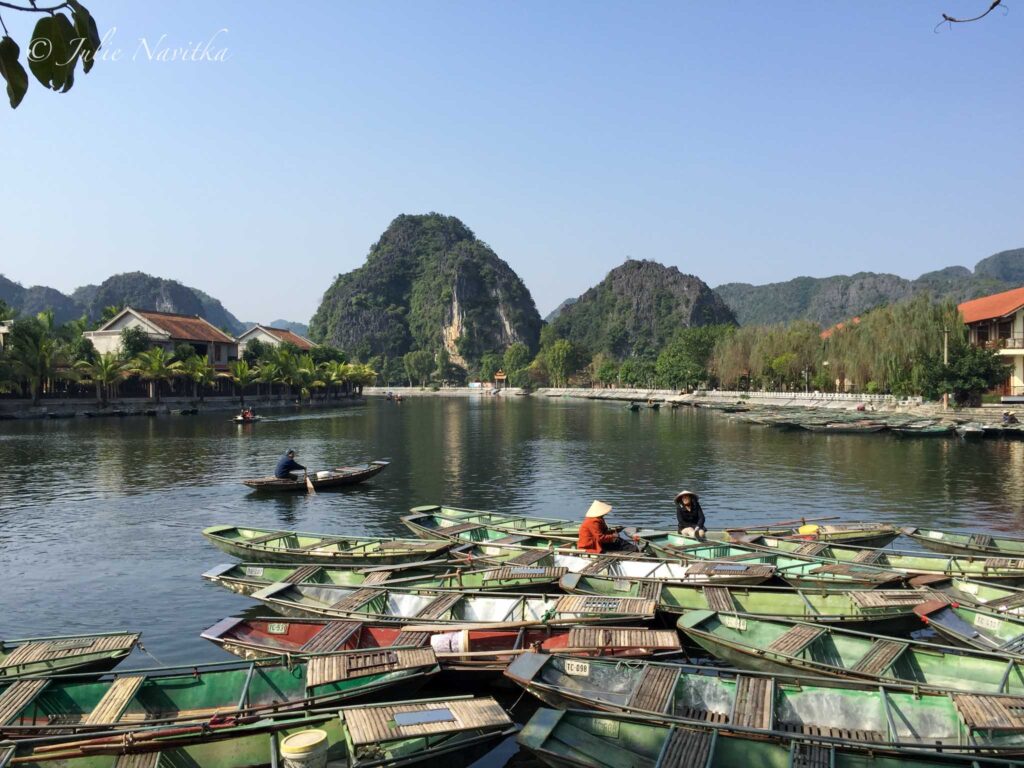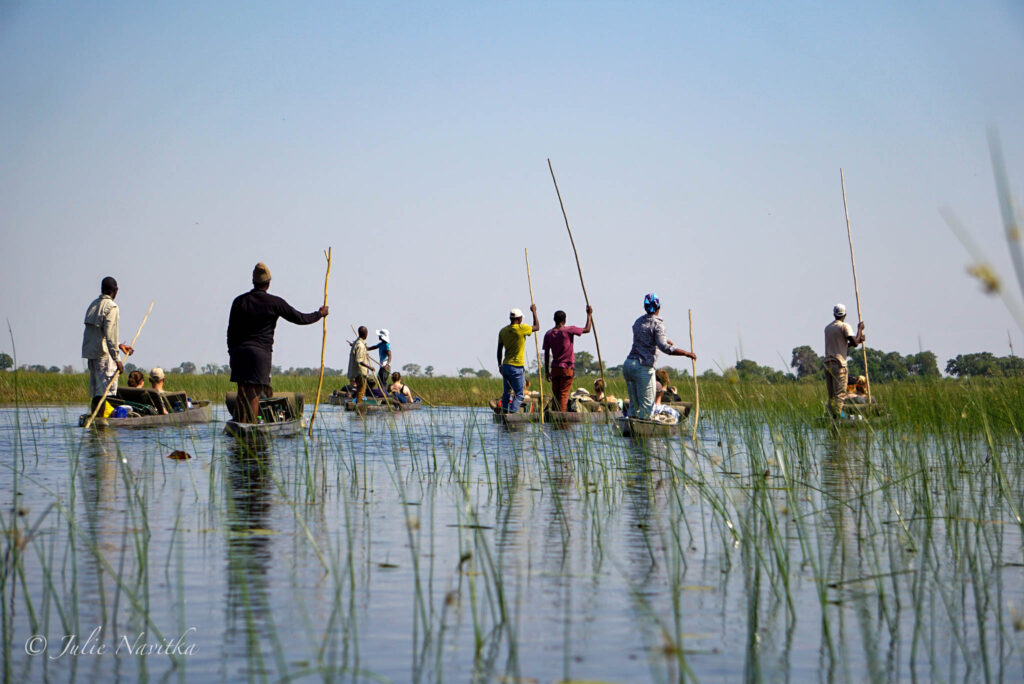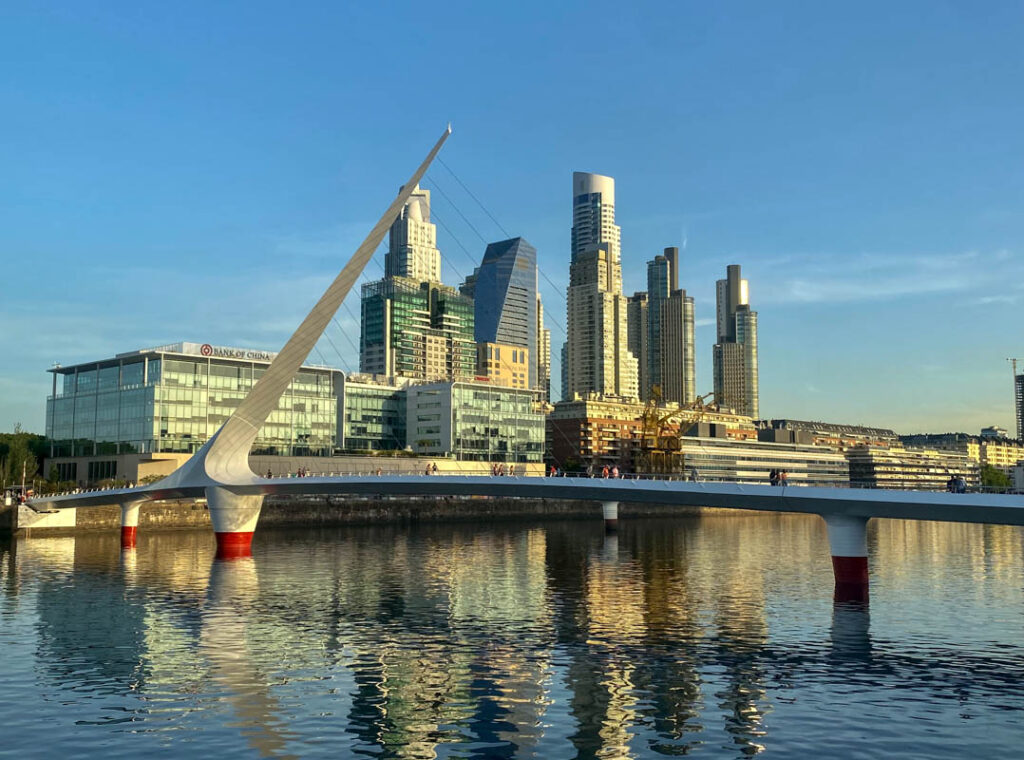Ultimate Guide: Sustainable Travel
Estimated reading time: 14 minutes
Whether it’s a weekend getaway, a resort retreat, or an adventurous world tour, leading a sustainable lifestyle while traveling can be tricky. Sustainable travel doesn’t need to be complicated. As a sustainable nomad, there are many ways I can incorporate sustainability into my daily life. No matter your travel style, I’ll help you ensure your trip is as economically, socially, and environmentally friendly as it can be with some tips and tricks for sustainable tourism practices.
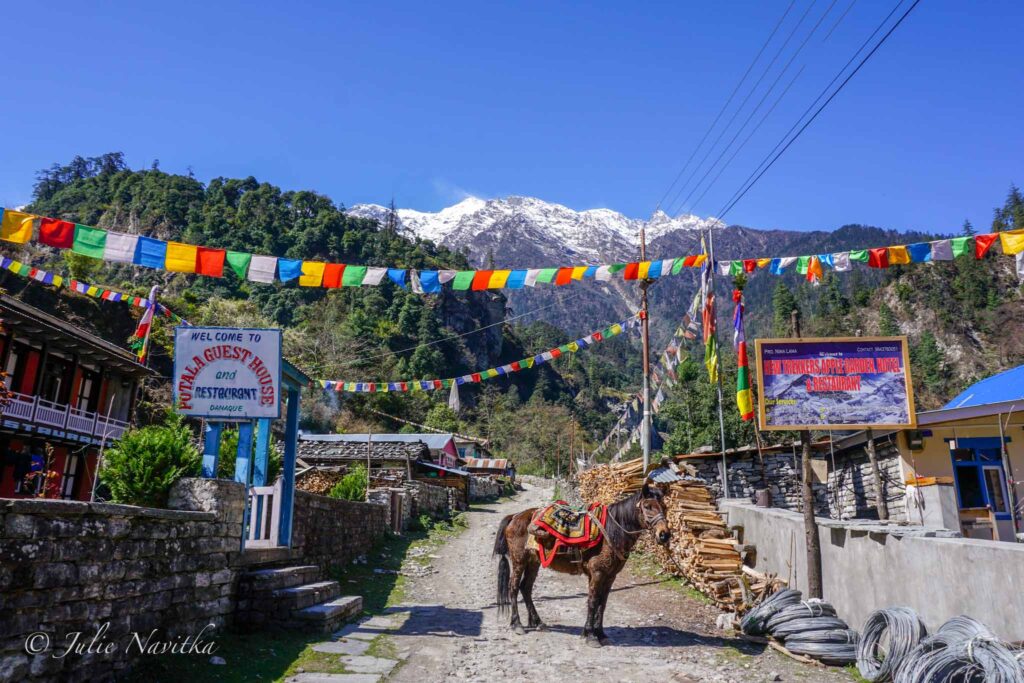
Key Takeaways
- There are many small ways you can make your travels more sustainable.
- We must consider our impact on the environment, the people, and the economy when attempting to practice responsible tourism.
- There is no “one size fits all” answer to ensuring your travels are eco and socially responsible.
- Your destination, what you pack, how you commute, where you shop and eat, and the activities you participate in all affect the sustainability of your travels.
jump to sustainable tourism tips in any category:
Packing for Sustainable Travel
Reduce Your Environmental Impact
Respect the Culture and Language
Recent Blog Posts About Sustainable Travel
What is Sustainable Tourism?
We have recently become more aware that sustainable tourism is essential. To be a sustainable traveler, you must travel responsibly concerning environmental, economic, and social aspects. Basically, if your destination doesn’t benefit in some way from your visit, it’s likely not very sustainable. You can take many sustainable practices with you while traveling to ensure your impact is positive.
Why is Sustainable Travel Important?
You cannot claim to lead a sustainable lifestyle if you don’t practice sustainable travel. International tourism has grown exponentially in the last twenty years, making responsible travel more critical than ever. With so many people participating in global travel, the impacts, especially the environmental ones, are mounting. Each additional flight in the air increases carbon emissions. With more development occurring in popular tourism destinations, air quality decreases, and energy consumption increases.
When it comes to the importance of being sustainable while travelling, for our friends and fellow digital nomads, Garrett and Stefany Eve of Herbal Ladies, the answer is easy. “Sustainability is crucial to minimize our ecological footprint, preserve our environments, and support local communities. It’s important to us as we believe in responsible and global citizenship.”
We must do our best to travel sustainably to be part of the solution.
Recent blog posts about sustainable travel
Sustainable Travel Tips
Sustainable and green travel is possible. Those who prioritize employing sustainable practices daily are more likely to carry them over into their travels. In each of the main categories below, I will point you in the right direction when it comes to traveling more sustainably.
Choosing Your Destination
If you are determined to make your next trip as sustainable as possible, your destination should be priority number one. Ideally, you would visit your home country and choose the most efficient and environmentally friendly transport. Unfortunately, it is only realistic for some of our travels to occur this way. Sustainable travel can still be achieved when visiting other famous tourism destinations.
Big City Trips
Big cities often experience mass tourism at a specific time of year when the weather is most favorable. Adding many people to an area at once can stress resources and often have harmful impacts on local communities. If you’re planning a trip to a big city, consider visiting in the off-season to lessen your impact. Try choosing a city that is already known for its sustainability initiatives. Read this article for more tips on how to make your big-city trip more sustainable.
Rural Escapes
My most memorable trips have been to less-traveled places in natural areas. To truly know a place, one must wander off the beaten (paved) path once in a while. Keep the tourist industry from telling you where to go!
Regardless of your preference, the World Tourism Organization can help you choose an eco-friendly destination based on many factors such as seasonality, and tourism GDP & employment. The folks at Sustainable Travel International also have an excellent short-form documentary series you can check out called Sustainable Travel: Where Next?
If you want to make the largest positive impact and you’re looking for adventure, you might try ecotourism! You can read more about what it is and some of the top spots to do it in this article.
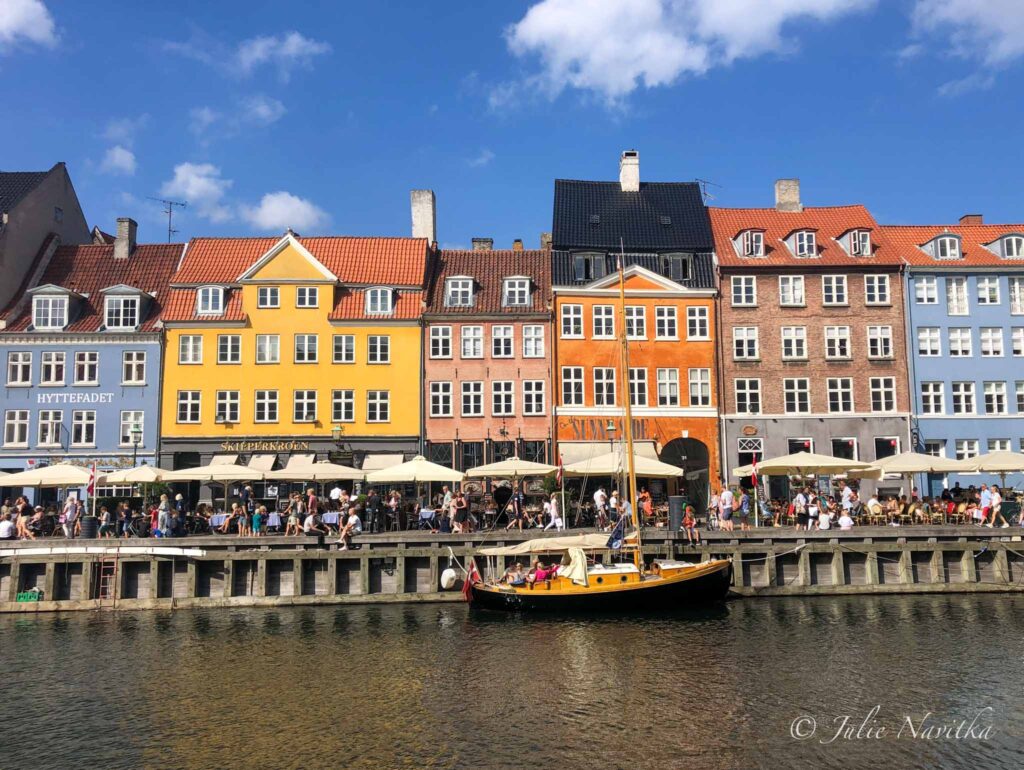
Getting There Sustainably
There is no doubt that the biggest factor in our carbon footprint reduction when it comes to travel is choosing sustainable transportation methods.
Air Travel
It’s no secret that air travel is the least environmentally friendly option. This doesn’t mean it should be entirely off the table. There are several ways you can ensure your flight is the most sustainable it can be. First, pack light. The less weight the plane has to carry, the fewer fossil fuels it burns. Second, consider slow travel. This means spending a more extended period of time in your destination, leading to fewer flights taken overall. Fly economy and, if possible, book a direct flight. Lastly, research the airlines available to choose one that participates in carbon offsetting in some way.
Taking the Train
If there are no oceans to be crossed and your timeframe and destination allow it, consider taking the train. According to this BBC News article, domestic rail generally produces less than one-third of the emissions per traveler than a domestic flight.
Motorcoach or Road Trip!
I’ve taken many long coaches on my travels, and I know it’s not many people’s cup of tea. However, it is one way to see the landscape and genuinely experience a place. Settle in with a good podcast and lose yourself in the scenery out the window. Or, if you have some friends traveling to the same destination, consider taking a vehicle together and making a fun road trip out of it!
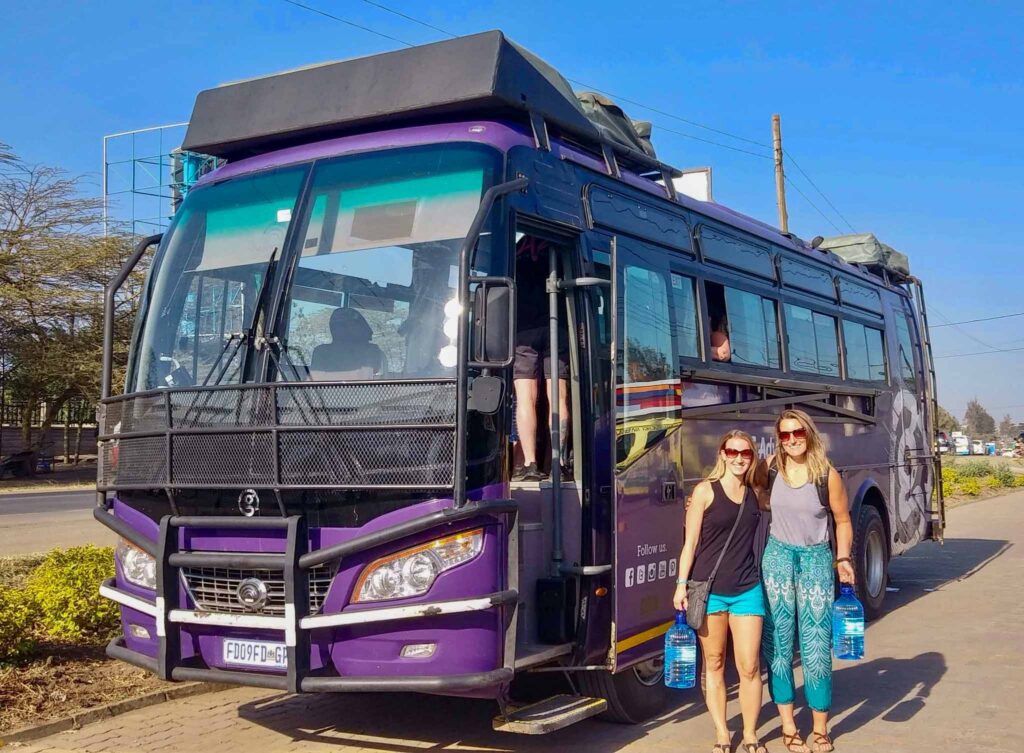
Packing for Eco-Friendly Travel
We’ve already mentioned that packing light is best, not only if you’re flying but also for your back! My first rule of packing light is thinking few multi-use items rather than many that I will only need once. My preferred footwear is a pair of trail runners. Check the long-range weather forecast or temperature trends for the time of year you’re visiting to ensure you bring the proper clothing. Read our article “What to Pack for a Year of (Sustainable) Travel” for some tips and our ultimate packing list!
There are some other sustainability practices we can follow regarding our luggage and eco-conscious packing. First, look into some luggage brands that have sustainability initiatives in place. There are bound to be local businesses that sell what you need near you.
Next, make sure you pack the essentials like a travel towel, a reusable water bottle, and some reef-safe sunscreen. If you’re going to be spending time in the sand with your kids, you may want to bring some of your eco-friendly beach toys too. Avoid the need for plastic bags by packing your reusable shopping bag. I always bring some reusable food containers and utensils when I travel to bring snacks and avoid plastic throw-away cutlery while exploring my destination. And don’t forget your sustainable travel toiletries and plastic-free personal care products!
Sustainable Accommodations
With many cities focusing on sustainable tourism development, finding sustainable accommodations with eco-friendly management practices is becoming easier. If you can find one that supports all three pillars of sustainability – economic, social, and environmental; congrats! Something else to keep in mind when booking your stay is the proximity to amenities and places you want to visit. Staying nearby will reduce your need to travel long distances, decreasing the environmental impacts of your commutes.
What To Look For
But what should we look for when booking your stay? First, to support the local economies, avoid large, multinational hotel chains. Next, look for a sustainability policy and any green certifications for accommodations if the accommodation has a website. They’ll be advertising it if they are participating in the sustainable travel movement. Many booking apps now offer filters to help you choose accommodations that have provided information regarding their sustainability practices.
You could also try the site bookdifferent.com, which has done some of the work for you already. If all else fails, contact the accommodation directly and ask them for a full account of their sustainability policy.
Rural & Authentic Escapes
If you like to experience a place more naturally or authentically, consider investigating some homestays or farm-stays, or even home-exchange options. Camping might even be something you’re willing to try out and allows you to experience more of the natural environments in your destination.
Cruises & Resorts
Although many cruise lines are starting to implement more sustainable practices, as a general rule, cruise ships are one of the least sustainable travel options. The same can be said for all-inclusive resorts. If your heart is set on one of these, research before booking to find the one already taking steps to decrease its social and environmental impacts.

Public Transport
Once you’ve reached your destination, you’ll likely want to explore! How we choose to get around at this point can help us practice more low-impact travel.
Taxi/Uber
Although you are contributing to the local economy and job creation, traveling locally by car is still the least sustainable method. If you must take a taxi, try sharing the ride with other travelers. This will help you save money too!
Buses, Streetcars, Trams, and Metros
The bus may not be super exciting, but streetcars, trams, and the subway are a treat I don’t get to experience at home! Dig a little bit online to find out how (much) to pay and schedules to make this option an easy sustainable transportation option.
Body-Powered Transport
By far my preferred way to explore a new place. Not only are there great health benefits, but it’s also the best way to see the sights and the most sustainable method. Eliminate your carbon emissions just by using your own two feet. Pack comfortable shoes to walk, run or roll your way around!

Be Mindful of Your Environmental Impact
It wouldn’t be sustainable travel without considering environmental sustainability. With the growing concern of climate change and declining natural resources, lessening our negative impacts in these areas is the least we can do.
Energy Consumption
Just as you would do your best to conserve energy at home, you should minimize your carbon footprint while abroad. Burn fewer fossil fuels and emit fewer greenhouse gases by keeping the temperature in your room at a reasonable level while there and adjust it for when you are away. Make sure all lights and electronics are turned off while not in use.
Waste Production
To lessen our environmental impact, we must be conscious of how much waste we produce. When purchasing snacks or other necessities, consider the packaging to avoid plastic waste and just say no to single-use plastics for zero-waste travel. Be eco-friendly and find out how to recycle or even compost properly where you’re staying. Make sure you practice the Leave No Trace Principles while exploring!
Water Conservation
You’ve packed your own water bottle, but more is needed when conserving this precious natural resource. To practice sustainable tourism, we must cut back on our water use. Aside from the obvious shorter showers and unnecessary tap running, avoid excess water used for laundry by requesting your towels and sheets to be changed only when absolutely necessary. Learn about the hidden water use of the products we buy and the food we eat to make informed decisions. Use eco-friendly hygiene products to avoid washing chemicals down the drain.

Supporting the Local Economy
Part of sustainable tourism is about supporting the future economic development of the place you’re visiting. There are many ways to support local communities while we travel to ensure economic benefits are created.
Food and Shopping
One of my favorite parts about travel is trying all the local food. And my friend, Stefany Eve, agrees: “I love to support local businesses such as eating out at local spots. My partner and I love to get familiar with the public transportation and it actually helps us get to places we wouldn’t even bother going.”
It’s easy to support the local people by dining at family-owned restaurants or grocery shopping at local businesses. You might even consider taking a cooking class, which will also help you learn more about the local culture. Making sustainable food choices is not only healthier, but also contributes to responsible tourism.
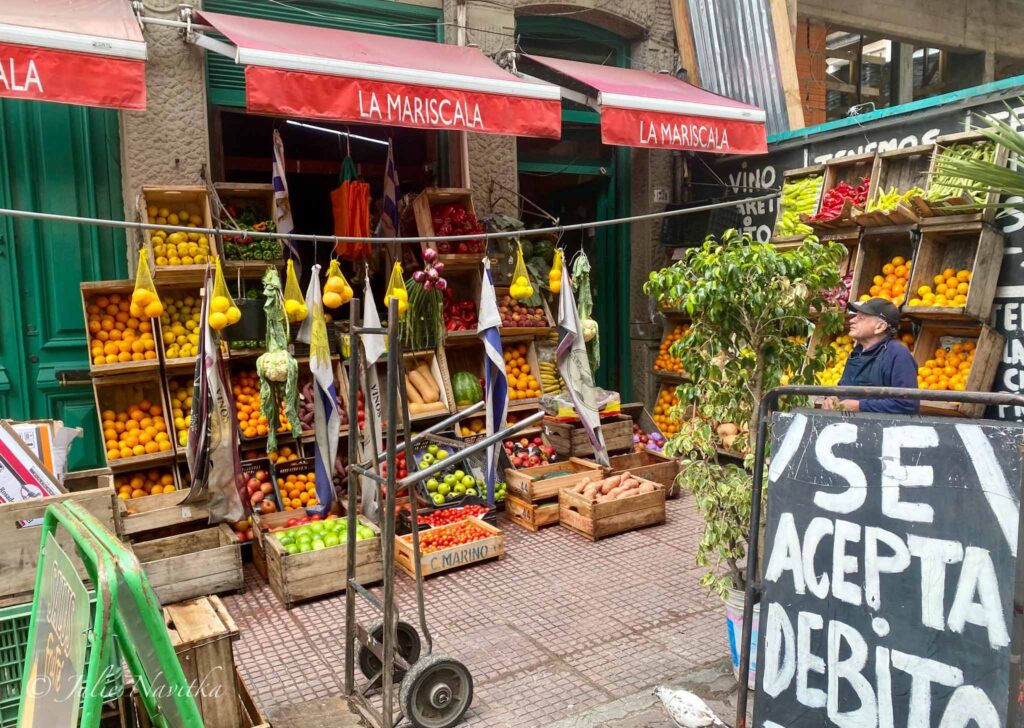
Tours and Excursions
Community-based tourism and local tour operators rely on you to go on excursions for job creation. I’ve had local guides help me visit places that would never have been possible on my own. Local residents can help you understand and appreciate the beauty of a place better than anyone else. Consider hiring a local guide for local activities or nature tourism, visit some national parks in the area, or take a sustainable winery tour.
We also need to be mindful of the responsible management of wildlife, biodiversity hotspots, and natural resources when planning tours and excursions. Ethical travel means we consider the local people and wildlife when choosing eco-sensitive activities while abroad. We must ensure that the options we choose support wildlife conservation and aim to protect the natural environment rather than exploit it.

Cultural Immersion
There is a significant social aspect involved in sustainable travel. Respecting the local communities and ensuring there are positive benefits to the local people that come from our visit is essential.
Best Practices
Learn some of the local language. There is an abundance of tools that you can use to do this, like a language app, podcast, or online course. Being able to greet and thank someone shows that you respect their language enough to learn the basics. My partner and I are currently taking spanish courses in Cusco, Peru to help make our travels more sustainable!
Take the time to research local experiences, customs, and traditions so that you can honor them while visiting. Learning social norms will help you avoid unintentionally offending someone in your host communities.
Entertainment and the Arts
There is no better way to learn about the cultural heritage of a place than to attend an event in the performance arts. Whether it’s a traditional dance, musical, or theatre performance, find out what your destination is known for and partake! By paying to attend these events or to enter an art gallery or museum, you’ll be helping preserve traditions and artifacts and supporting the local economies.

Conclusion
Sustainable tourism is everyone’s responsibility. As you can see, sustainable travel encompasses many areas. To be a truly sustainable traveler, we must consider environmental sustainability, the local economy, and respect the local community.
Employ as many of these sustainable travel tips as you can, and you’ll be well on your way there!
Remember, every journey begins with just one step, and your endeavor to become a sustainable traveler is no different.

